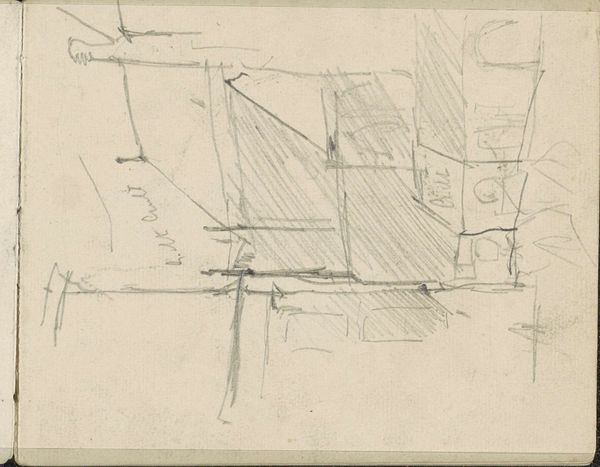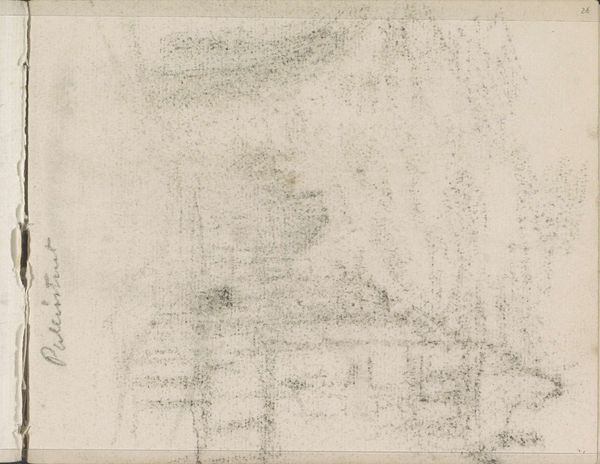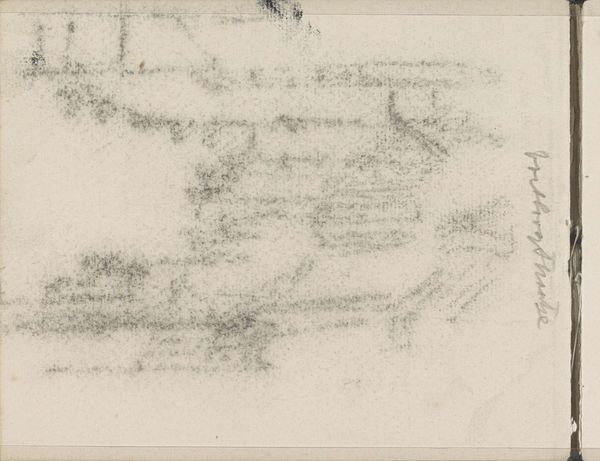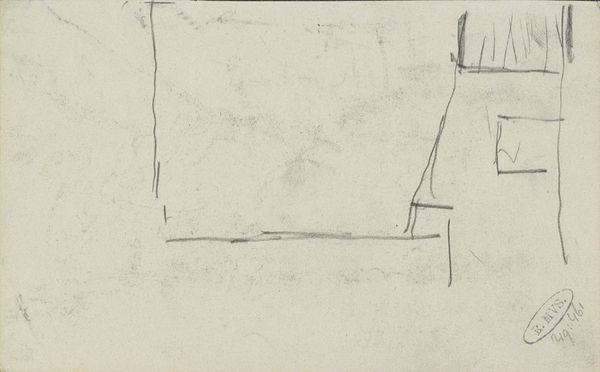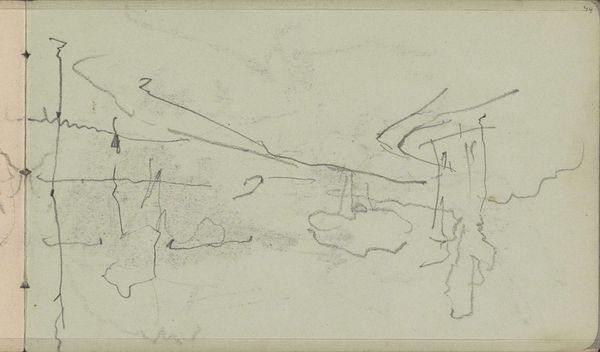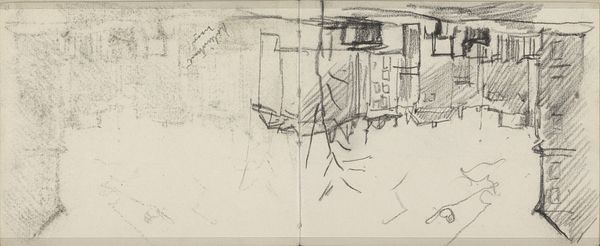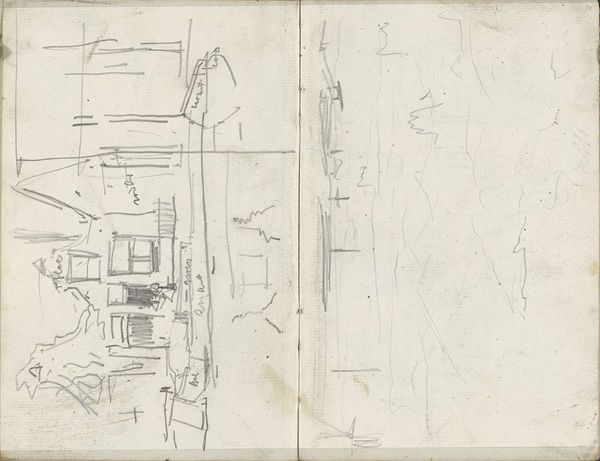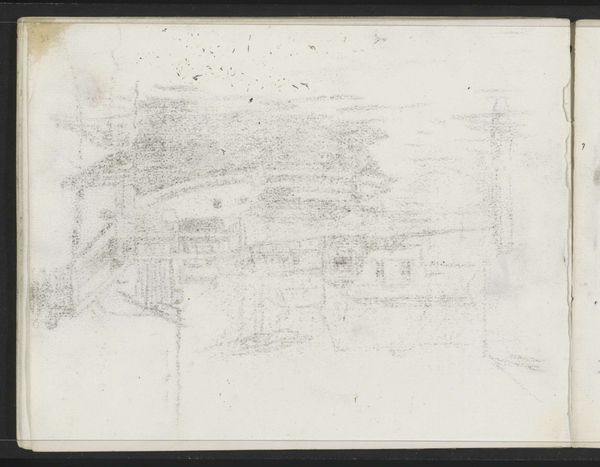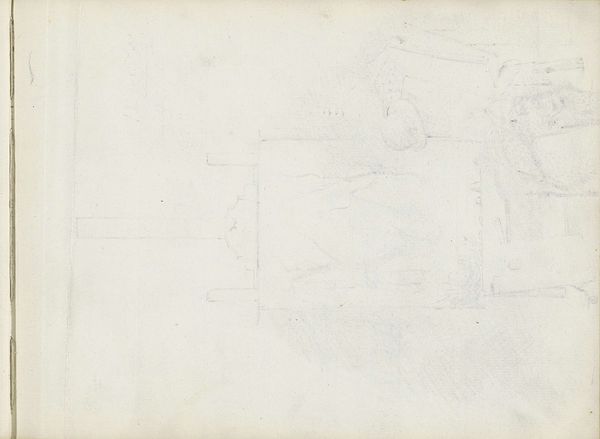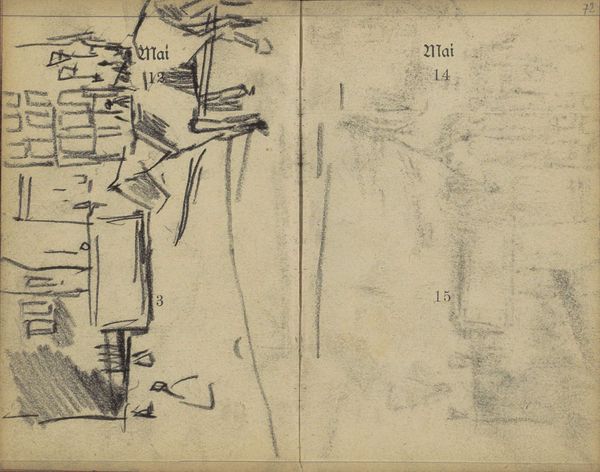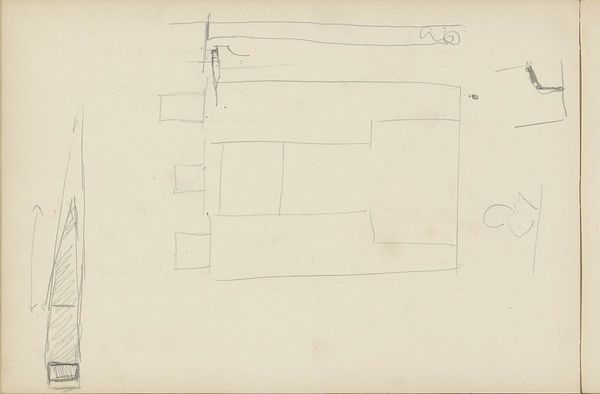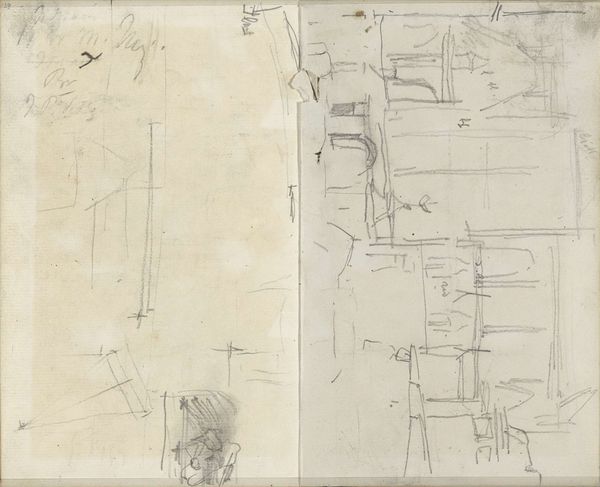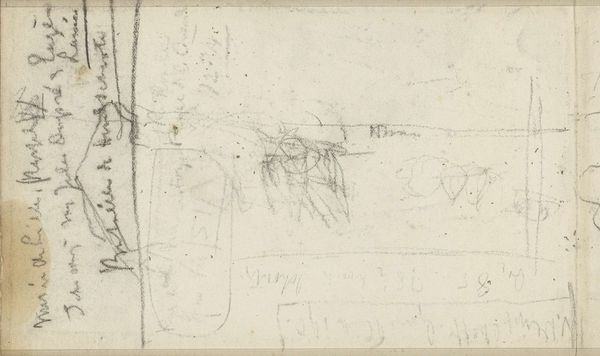
drawing, pencil
#
drawing
#
amateur sketch
#
aged paper
#
toned paper
#
hand written
#
homemade paper
#
impressionism
#
sketched
#
sketch book
#
incomplete sketchy
#
hand drawn type
#
landscape
#
personal sketchbook
#
pencil
#
realism
Copyright: Rijks Museum: Open Domain
Editor: This pencil drawing, "Studie, mogelijk van een mast," by George Hendrik Breitner, created around 1886 to 1891 and housed at the Rijksmuseum, appears almost ghostly, like a fleeting thought captured on paper. What catches your eye in this study? Curator: Well, focusing on the materiality of this sketch, the paper itself seems to be of interest. Note the aging, its texture – likely not a commercially produced sheet, but something handmade or repurposed. Consider Breitner's process: the swiftness of the pencil strokes suggesting a need to capture a fleeting impression, maybe a reflection of the industrial landscape rapidly changing in Amsterdam during that period. What do you make of that? Editor: That's fascinating. The speed implies an urgency, as if the artist felt compelled to document something vanishing. Do you think the imperfection, the "sketchiness," adds to its meaning? Curator: Absolutely. It pushes back against the rigid academic standards, emphasizing the raw process of observation and recording. The labor of the artist becomes visible, disrupting traditional hierarchies separating “high” art from working drawings and mere notations. We must consider what forces allowed for, or even compelled, such an image to exist in this era. Editor: So, it’s less about the perfect representation of the mast and more about capturing a moment in the face of constant change? Curator: Precisely. It highlights the artist's labor in engaging with, and responding to, the rapid industrialization they are surrounded by, while inviting us to consider the social context that necessitated it. Also note the holes used for filing, or keeping pages bound. This could speak to the role of resource management as much as artistic labor in Breitner's life. It prompts questions about access to materials. What are your thoughts? Editor: This has reshaped how I see it! It’s less an isolated artwork and more a piece of evidence pointing towards artistic practices, historical shifts, and their impact on the making of art. Curator: Indeed. Seeing the drawing through a materialist lens helps us see beyond the surface. The drawing reveals much more when considering paper, production, and context!
Comments
No comments
Be the first to comment and join the conversation on the ultimate creative platform.
